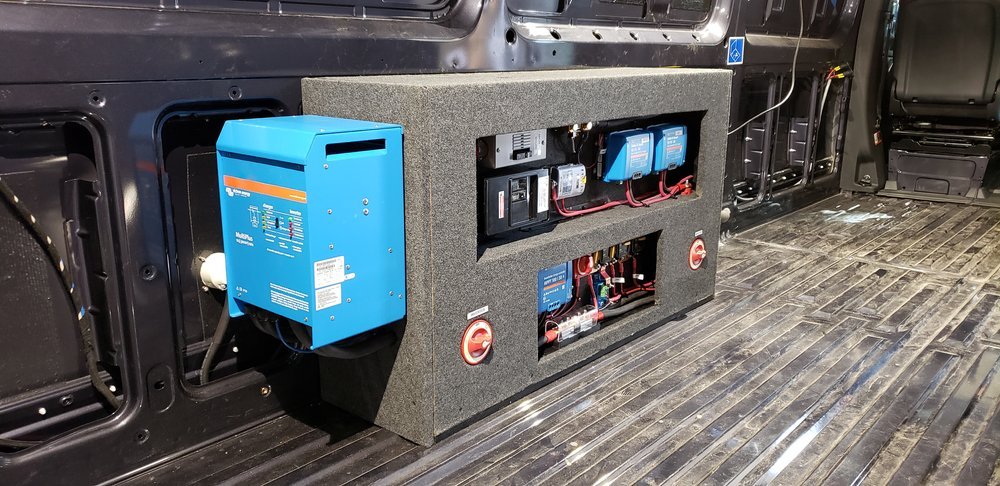AM Solar recently had the opportunity to build up a dream rig for a client. This 2021 Mercedes Sprinter Freightliner 2500 is the long and tall version with no windows.
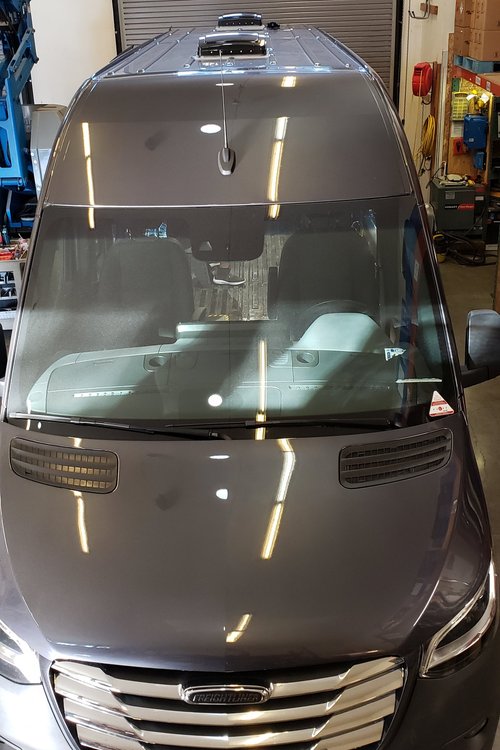
The client wanted solar charging, inverter/charging, alternator charging, and a small DC distribution kit. AM Solar’s experience with empty van installations led them to installing the batteries and inverter system over the wheel well, which can be built around nicely once you are ready to install cabinets, a bed, and other furniture.
The client wanted solar charging, inverter/charging, alternator charging, and a small DC distribution kit. AM Solar’s experience with empty van installations led them to installing the batteries and inverter system over the wheel well.
Because lithium batteries are a substantial investment, it is important that they stay in a clean, dry, warm location inside the rig. The inverter also needs to be mounted in a ventilated spot. This spot over the wheel well allows these components to be secured and accessible.
Originally, the system was quoted as a do-it-yourself project, but the client instead opted for the installation to be completed by the AM Solar professionals. Once the scheduling was sorted out, AM Solar was able to complete the installation within a week.
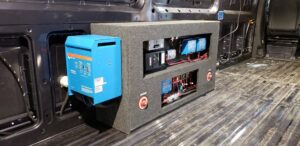
Installed system components:
- Battery: 200Ah (amp hour) LifeBlue Low Temperature Batteries and Monitoring System
- Alternator charging: Alternator Charging with a Dual Orion 60 A Kit
- Solar: 180W (watt) Solar Charging System and Kit
- Inverter: 3000VA Inverter/Charger 120A, Victron Energy MultiPlus
- DC Distribution: DC Distribution Kit
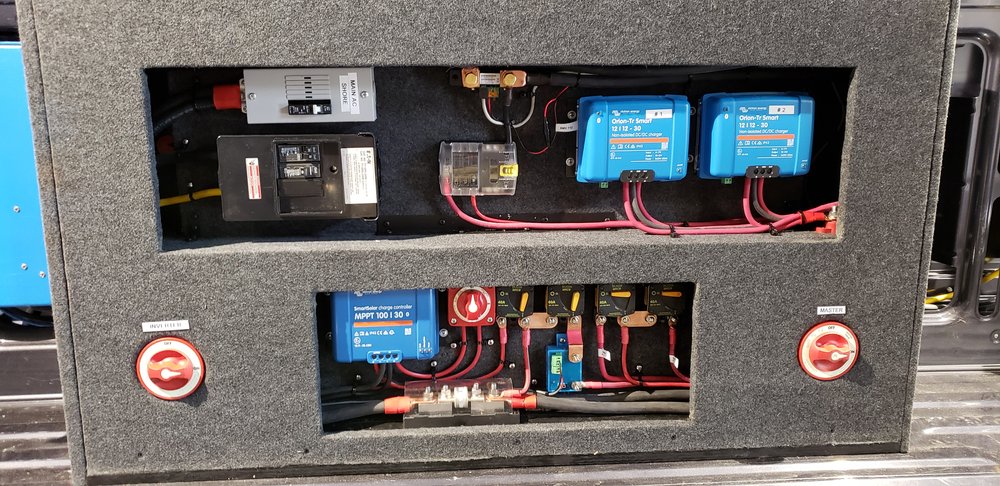
The two LiFeBlue Lithium Iron Phosphate 100Ah batteries provide the power storage for the Mercedes Sprinter. There are protections for the batteries so that they don’t overcharge or over-discharge. The temperature is monitored, protecting the battery bank from charging while frozen or operating with dangerously high temps.
We often recommend alternator charging systems for vanlifers. While solar can help with some charging, alternator charging is usually much faster and very easy. Whenever the van is driven, a larger load can be run and the batteries can be charged. This particular alternator charging sub-system is accomplished by using two Victron Orion-TR Smart Non-Isolated 12/12-30 chargers. This system is compliant with the van’s warranty when connected to the customer connection point (CCP) under the driver’s seat.
The solar aspect of this system is used to supplement the shore and alternator chargers with 180W of solar potential. This will sustain small loads while boondocking (camping without shorepower). The Zamp solar panels are designed for narrow spaces.
The charge controller is part of the complete solar kit with a Victron SmartSolar MPPT 100/20 that uses Bluetooth for monitoring. Communication of the charge rate and battery voltage gives the user a visual data reference as to the performance of the panels and the charging. There are options for a complete system display or the data can be seen via the VictronConnect App on a phone or tablet. On the app, data is stored for up to 30 days.
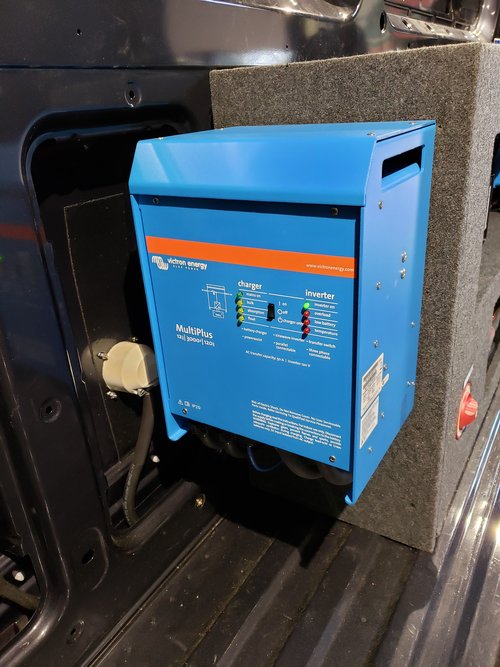
The Victron MultiPlus 12/3000/120 inverter/charger can provide 2400W of continuous power with a surge of up to 6000W. In this configuration, it will accept a 30A (amp) pass through, and charge the battery bank at 120A DC. This “Empty Shell Kit” variant comes with a shore power cord, an inlet, an AC breaker power disconnect, cables, lugs, heat shrink, master on/off switch, and a large class “T” fuse.
All of the components in each kit are meant to interconnect and work together seamlessly. The decision to install the batteries and charging electronics over the wheel will save the customer space when they go to build out the rest of the interior of the van. The AC (alternating current) and DC (direct current) outlets were added and left with extra wire attached so the client can move and install those into the cabinets at a later date. The AM Solar installation will provide the core of the electrical system and years of dependable service.
Takeaways
- Consider your loads and power needs. If you’ll be boondocking for long periods of time, make sure you have an appropriately-sized battery bank.
- Strongly consider getting an alternator charging system. Vans have smaller roofs, so your solar roof array may not give you enough power. The alternator charger can quickly charge your batteries while you drive short distances.
- DIYers looking for a location to install their system, may want to consider the wheel well interior. Keep your components, clean, dry, warm, and well-ventilated for success and longevity.
- If you buy a DIY system from AM Solar, take confidence knowing AM Solar is in your corner helping you every step of the way through your DIY build. If you’re still not sure you’re ready to take on the installation, let us know and we can give you a new quote and get your install scheduled with our installation experts.
